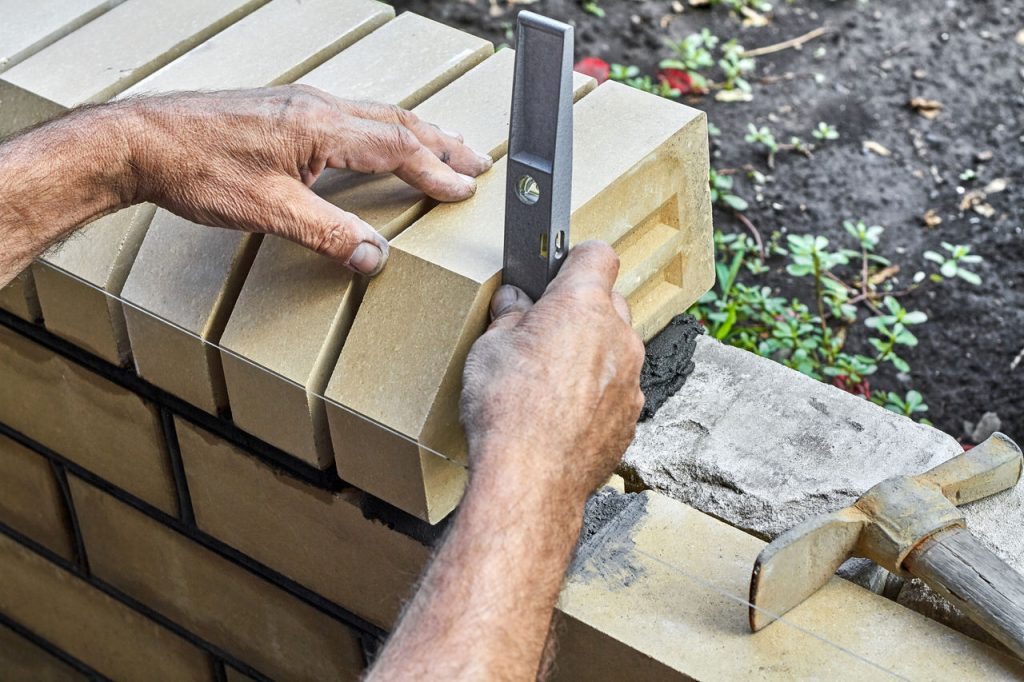Self-supporting (retaining) walls will effectively separate your property, protecting it from nosy neighbors and uninvited guests. They are usually made of concrete blocks, poured concrete, treated wood, rocks or boulders. Some are easy to build, while others require the help of a professional
Over the years, a variety of self-supporting wall materials have brought life to the landscape. While wood is an inexpensive and simple option, it will not last as long as other building materials. With the decay of wood, one must expect the masonry and integrity of the usable space to be compromised. Stones, rocks and boulders can make beautiful fences, but they are expensive and labor intensive to install. In addition, maintaining a stone wall is challenging because it can erode over time or become home to birds and rodents.

Some people make retaining walls out of poured concrete, while others opt for silicate blocks. The proposed fences come in a variety of colors and textures to match any environment. However, the aforementioned structures are rigid. They do not move or bend under the influence of climate change, earthquakes and other natural forces
There are various factors to consider when designing and building a fence. Consider what kind of wall will perform best in a given location. Find out if it needs reinforcement, and even what material will fit in with the surroundings and building facade
Before you choose a site for the wall, make sure you know the exact boundaries of the property and the course of above- and below-ground utilities, including rainwater management and irrigation systems. See what kind of soil you intend to build the fence on. Determine the type, bearing capacity of the soil, stress parameters and angle of friction.
Generally, the soil should be firm, compact and strong. Make sure it is not moist. Otherwise, it may shrink and expand, which will damage the self-supporting wall. It is also worth remembering that sandy soils allow for good drainage. Read the geotechnical report, which describes the soil type, its chemical properties and groundwater conditions.
These walls use their own weight to hold the soil behind them. They are usually made of heavy materials such as stone, large concrete blocks or cast-in-place concrete. They can be low (up to 120 cm) or reach up to 400 cm without reinforcement.
Basic engineering principles ensure the stability of gravity self-supporting walls. Wet cast and aerated cement block construction ensures that the fence can handle any conditions. The sheer size and weight of the wall ensures its stability and durability. What is important, this solution is safe and maintenance free.
The proposed retaining wall can be designed in any style. The stone finish looks beautiful and natural. Although the fence is massive, it does not require mortar and nails. You simply need to stack the stones using a patented system.
Segmental retaining walls consist of modular concrete blocks that interlock with each other. Without a proper drainage system, slopes can collapse or landslide. The unique design allows for the construction of higher, steeper walls. Versions are available in a variety of colors, sizes and textures. This way you are sure to find something you like.
When designing a self-supporting wall, don’t overlook aesthetic qualities. Choose a material that matches your surroundings. If you like minimalist style, a stone fence will definitely appeal to you. Concrete blocks, on the other hand, don’t look very natural. However, if you have a paver patio, you can opt for this solution. You can use different materials to build a retaining wall. Cast concrete often surrounds commercial buildings. On the other hand, pressure-treated wood will work better in rural areas.